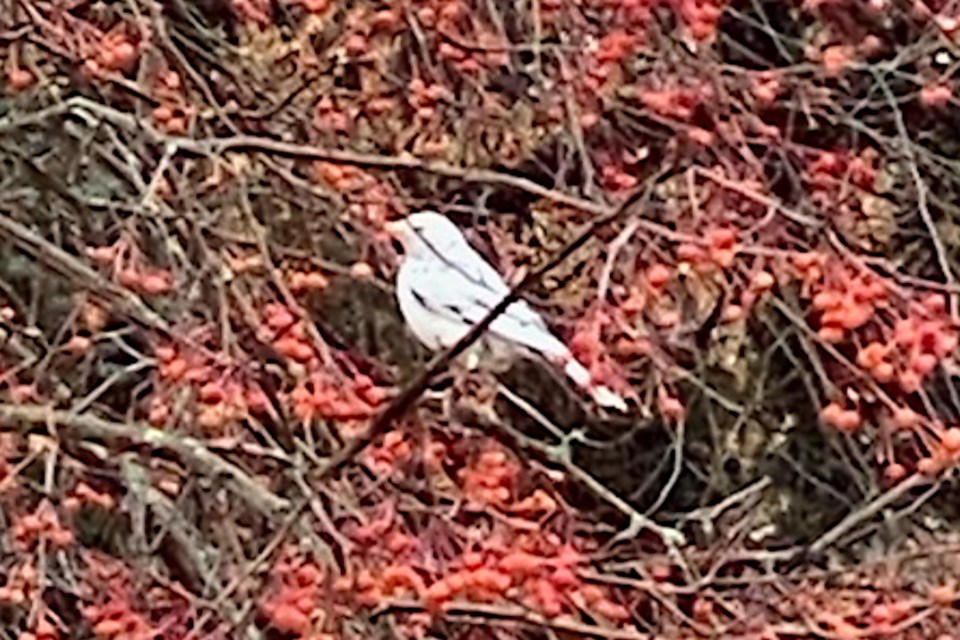ATHABASCA - Since 1900 the annual Christmas bird count has taken place in locations across North America, and since 1993 has been an annual event in the Athabasca region ornithological enthusiasts of all ages to capture a snapshot of the abundance of species and sheer number of individual birds in the area.
Held annually Dec. 27, this year’s count will hopefully attract some extra people to come out as it is a pandemic-safe event to take part in, and birders of all experience-levels are welcome to join, said incoming coordinator Ursula Brant, who will be taking over for founding member Harvey Scott after this event.
“We've been trying to encourage more people and maybe this year it'll be an activity,” Brant said.
Brant said Scott has asked her numerous times to take over as coordinator, and this year it happened to fit into her schedule, so she is gradually taking over so he can step back a bit.
“I’ve been thinking about trying to find somebody to take over for a number of years and I sort of prodded Ursula a few years ago,” Scott said. “I think she'll be a great coordinator going forward. I'll work with her this year and then if she needs to next year, but she's great. She's smart, she's quick and direct.”
Scott added Brant is also well-known in the region and hopefully will be able to get a lot of feeder counters, not just in and around Athabasca, but throughout the entire Town & Country region as well. She asks any counters taking part to let her know where they saw the birds, and over what distance if they were out hiking or cross-country skiing.
"We turn no one away and if they go for a walk in the forest, or cross-country skiing or whatever, just keep in mind where your area is, like if you get a car and drive to Calling Lake, then I'll have to know,” said Brant. "You count the maximum number of birds that you see at one time, and then keep skiing and then you'll see something else and something else and you just keep adding it to your list.”
Bird week runs from Dec. 23 to 30, and gives birders a chance to include anything out of the ordinary, like an eagle, or owl, and the actual feeder count is Dec. 27.
“You can only count the birds you see at one time (on Dec. 27),” said Brant. “Maybe you see 10 chickadees at one time and then an hour or two later you see 15, you put down 15, you don’t add them together and the same with the other species; all the species don’t have to be at the feeder at the same time, but you can only take the highest count.”
Once the count is turned in, Wayne Brehaut compiles the data and gives it to the Audubon Society, Bird Studies Canada and Science Outreach Athabasca where the numbers will be published locally.
If you want to take part in the field count or to turn in your count after Dec. 27, contact Brant at 780-689-7443, Scott at 780-675-4158 or Brehaut at 780-675-4461.
A link to common birds in the region can be found at https://bit.ly/AthabascaBirdList.


